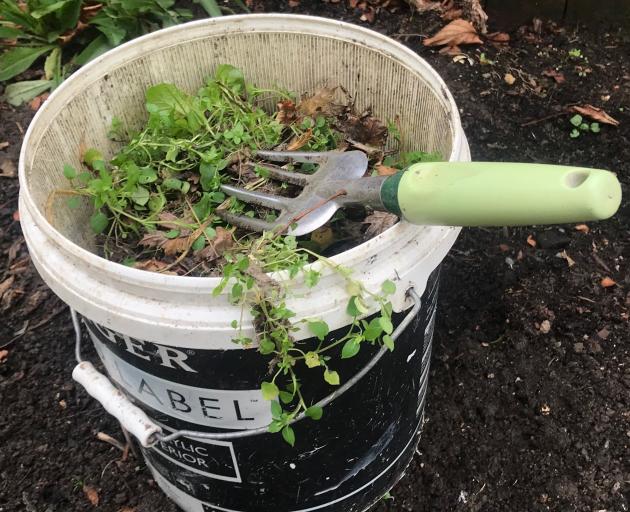
Last week, I read that the Fairfeld Garden Club was booming.
The president said he thought the resurgence of the Dunedin club was the result of younger people wanting to be more self-sufficient and their feedback showed growing vegetables was a priority.
Despite the nasty weather earlier this week, this is a suitable time to start planning and preparing to grow vegetables.

Space saver
If there is no room for a garden, pots of plants can be grown on a balcony, deck or path. Among the vegetables that work well in containers are potatoes, silverbeet and lettuce. Rhubarb, too, will grow happily in a deep pot if lots of manure goes under its feet, while some dwarf fruit trees lend themselves to similar treatment. Special herb and strawberry planters are options, too.
Potted plants need adequate drainage and a simple solution is to place four or five milk-bottle tops under a large pot. This keeps the drainage holes clear – and it’s free.
Begin at ground level
Most vegetables like sunshine and well-drained, moist, rich soil. In an existing garden, it will be necessary to work with what there is, but don’t despair, as moisture, drainage and nourishment can be added. If there’s not much sun, remember that some vegetables, such as oca (yams), don’t object to semi-shade. If a new vegetable garden is planned, try to find a sunny spot and take it from there.
Raised beds
Raised beds can be simple or posh, depending on available funds, time and energy. Oddments of timber and bricks can be used for edgings. Don’t bother about digging: take out perennial weeds – dandelion and docks are the main ones – then put a thick layer of newspaper or cardboard on the bottom and top up with compost, a handful or two of lime and soil.

The drawback of raised beds is that they need more watering in summer, but planting closely helps retain moisture in hot weather.
Basic tools
It is surprising how much can be done with very little. A fork, spade and hand fork are enough for starters – plus secateurs if you have shrubs. Other tools can be bought as the need arises. Spades and forks with wooden handles have a bit of flexibility so jar less.

Clean tools after use to keep blades and tines rust-free and oil wooden handles to extend their lives.
What to plant
Keep things simple when starting out. Potatoes are a top choice, not only because almost any bit of ground will produce a crop, but because they are invaluable in breaking up hard soil. The same is true of broccoli and cabbages, while broad beans and silverbeet are among the hardiest vegetables around. Delay sowing seed until at least September as many vegetables, including carrots, beetroot and parsnips need warmer soil to germinate.
Freebies
Make the most of free items, not just when starting out. Reusing items is not only good for the budget but for the planet, too.
Scrub plastic paint buckets, punch holes in the bottoms and use them for growing spuds and other vegetables.

An old knife gets a new life as a weeding tool and for lifting seedlings; ties made of pantyhose strips are better than any commercial product; old venetian blinds make superb plant markers.
Get inspired
Join a garden club. Members are friendly, well-informed and enthusiastic, so it is a fantastic way to tap into local knowledge. On plant stalls, there are often plants you can no longer buy in garden centres, keeping old varieties going.
So be like those Fairfield people and join the resurgence.












